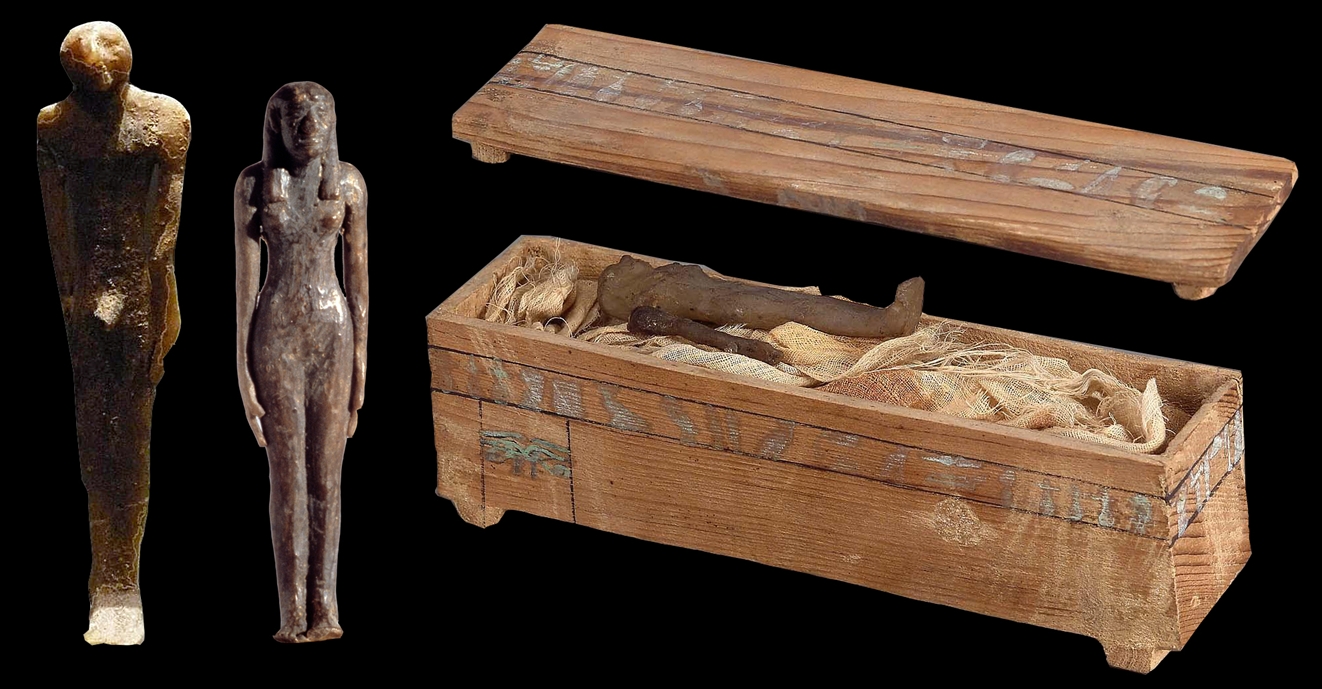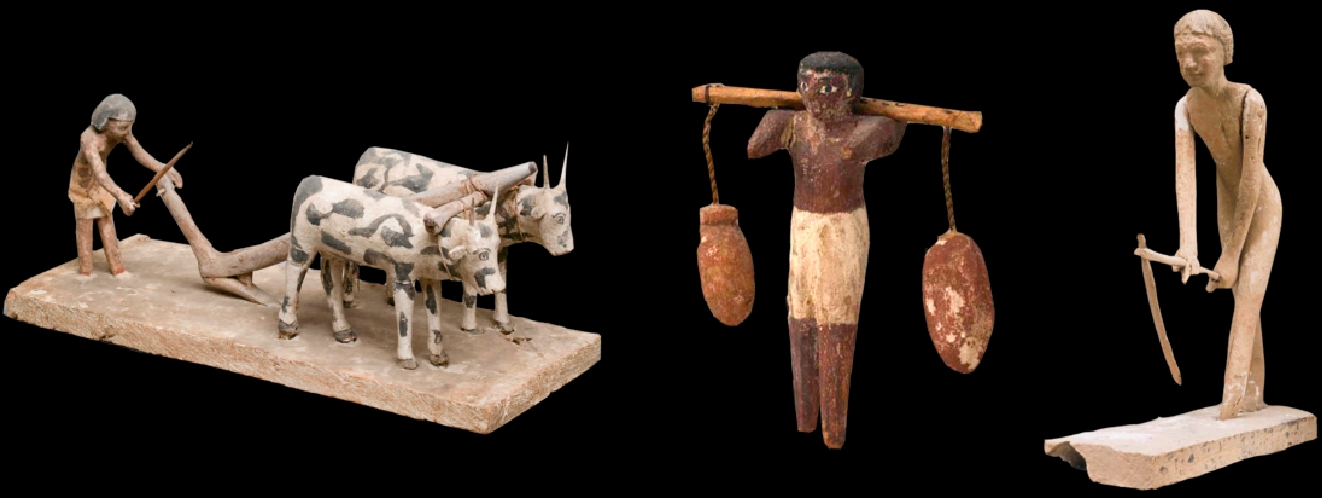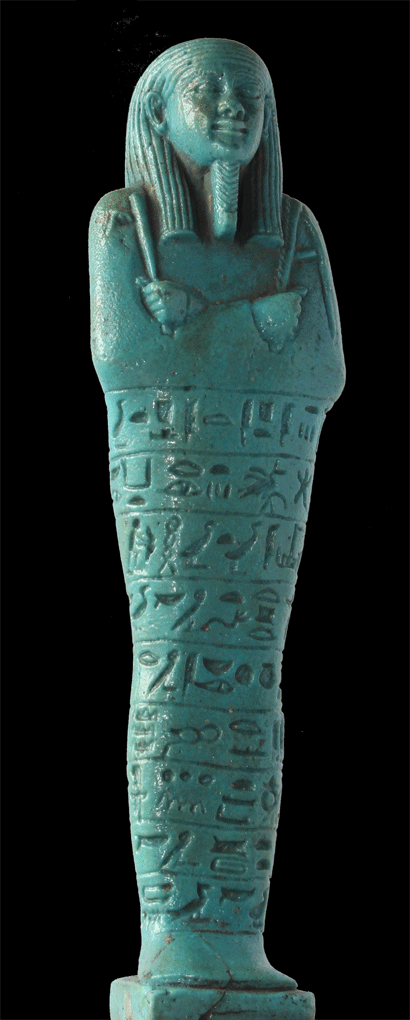|
|
|||||||
|
|
|
|
|
|
|
|
|
|
|
|||||||||||
|
|
|
|
|
|
|
|
|
|
|
|
|
|
|
||
|
|
|
|
|
|
|||||||||||||||||||||
|
First Intermediate Period
|
|
||||||||||||||||||||
|
|
|||||||||||||||||||||
|
Shabtis probably evolved from small human-shaped figurines that were crudely
made of beeswax and also mud. They were wrapped in linen and each was placed in
its own miniature wooden coffin. Examples have been found in the necropolis at
Saqqara that apparently date from the 9th Dynasty of the First Intermediate
Period and also at Deir el–Bahari in Western Thebes where several were found for Queen Neferu II, the wife
and sister of king Mentuhotep II. These date from the 11th Dynasty, Middle
Kingdom
[42] - [44]. None of these are shabtis as such. The figures are naked with the arms held
down by the sides of the body and they have their sexuality clearly indicated
in the modelling. They are not to be regarded as servant figures, but they were
probably made as a substitute in case the proper coffin and mummy of the
deceased was destroyed by tomb robbers or by natural decay.
As a matter of interest, beeswax was considered to have magical powers
associated with protection and regeneration, but its use was extremely short
lived
|
on account of its very fragile nature. It can be assumed that only a small
number of the elite and royalty had these beeswax figurines. Of course, because
of the fragility of the wax, only a few have survived. There may have
potentially been more examples that have been lost or destroyed.
The concept of the shabti also seems to have been influenced by wooden
statuettes that were placed in tombs from the end of the Old Kingdom onwards.
These figures were primarily concerned with the production of food, and include
brewers, bakers, and butchers. However, they were also represented as
undertaking agricultural duties such as ploughing, reaping and the sowing of
grain [45] - [47]. Comprehensive groups have been found in tombs comprising several statuettes
busy with different tasks. During the Middle Kingdom this type of statuette
seems to have been replaced by mummiform figures, and the appearance of them
obviated the need for the mass–production of the wooden servant figures which gradually disappeared from
funerary equipment.
|
|
|||||||||||||||||||
|
|
|||||||||||||||||||||
|
|
|||||||||||||||||||||
 |
|
||||||||||||||||||||
|
|
|||||||||||||||||||||
|
[42]
|
[43]
|
[44]
|
|
||||||||||||||||||
|
|
|||||||||||||||||||||
|
[42] Male figurine made of beeswax: First Intermediate Period (Munich, AS 6085)
[43] Female figurine made of beeswax for queen Neferu II: Middle Kingdom (New York,
MMA 25.3.244a)
[44] Miniature coffin and beeswax figurine for queen Neferu II: Middle Kingdom
(Boston, MFA 37.5501-c)
|
|
||||||||||||||||||||
|
|
|||||||||||||||||||||
 |
|
||||||||||||||||||||
|
|
|||||||||||||||||||||
|
[45]
|
[46]
|
[47]
|
|
||||||||||||||||||
|
|
|||||||||||||||||||||
|
[45] Model of ploughing: Middle Kingdom (New York, MMA 36.5)
[46] Man carrying jars on a yoke: Middle Kingdom (Liverpool, WM 22.3.15.3)
[47] Man using a hoe: Old Kingdom (New York, MMA 26.2.10)
|
|
||||||||||||||||||||
|
|
|
|
|
|
|
|
|
|
|
|
|
|
|
|
|
|
|
|
|
|
|
